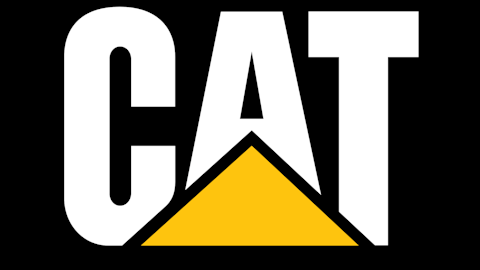Animal health industry: There are hundreds of different “investment gurus” lauded by the financial press as the names retail investors should pay attention to. There are just a select few money managers, however, that can generate consistent alpha in the equity markets. Michael Castor of Sio Capital is one such manager.
While chances are you haven’t heard of Sio Capital, Castor’s fund has worked well by staying under the radar. According to our analysis of Sio, the New York-based hedge fund is nothing short of an alpha-generating machine. Since its inception in 2006, it returned 10.4% a year vs. a 3.8% annual gain for the S&P 500 Total Return Index. With a portfolio beta of 0.15 during this same period, that’s 6.6 percentage points of outperformanceper year at near-market neutrality.

But there is more to Castor and Sio Capital than simply sparkling return statistics. There’s also the fact that nearly every investment thesis we’ve seen from the hedge fund manager in recent history has been exceptionally dead on. On April 1st, Castor discussed the upside of three of his favorite health-care stocks with us at Insider Monkey: Cardinal Health (NYSE:CAH), NPS Pharmaceuticals (NASDAQ:NPSP) and Anacor Pharmaceuticals (NASDAQ:ANAC). Since his analysis, the pieces of this trio are up 28.0%, 185.3% and 70.4% respectively.
Since confessing his love of two other medical companies — Rockwell (NASDAQ:RMTI) and Mazor Robotics (NASDAQ:MZOR) — in June, both are up an average of 84.1% in just over three months.
Michael Castor’s next promising pick
So now that you have an idea of his pedigree, let’s take a look at a pick he made at the Value Investing Congress this past week. Like his aforementioned picks, Castor’s latest baby also sits in the health-care field, with this particular one operating in the veterinary drugs industry. We’re talking about Aratana Therapeutics (NASDAQ:PETX).
At the VIC, we witnessed the hedge fund manager set forth a lofty price target on Aratana within three years’ time: $40 per share. How might this seemingly unknown animal health stock, which currently trades just above $15, hit Castor’s mark?
Model simplicity
Aratana Therapeutics is a Kansas City, Kansas-based company that went public on June 27 of this year. The company was founded in 2010 as a development-stage biopharmaceutical licensor and developer of “innovative prescription medications for pets, or pet therapeutics,” according to its official press release. The word innovation is used, because Aratana, rather uniquely, aims at converting human biopharmaceutical compounds for use in pets.
At the basic level, this is a simple, repeatable business model. Castor briefly touches on this simplicity in his August shareholder letter (obtained internally and released Sept. 12), which mentions that Aratana’s “drugs are relatively low-risk as they are already proof-of-concept data in humans,” adding, “human drugs must first be tested in animals, further providing evidence of safety and efficacy.” In other words, by in-licensing proprietary compounds from human biopharma companies, regulatory approval should be easier to achieve.
Existing pipeline is promising
The company has already licensed a trio of compounds — AT-001, AT-002 and AT-003 — that it plans to use in a half dozen product lines. According to the aforementioned press release, AT-001 is used to treat osteoarthritis in dogs and cats, AT-002 treats inappetence in dogs and cats, and AT-003 is expected to treat dog and cat post-operative pain. Here’s a schedule, via its August earnings press release, of where each of Aratana’s drugs stand at the moment in the development process.
The company says it expects to file new-animal drug applications (NADAs) on all three in 2015-2016 for U.S. approval. European approval is expected to be sought in 2016-2017, hence Castor’s three-year time horizon on his price target.
Market opportunity
According to the APPA, which tracks industry statistics, total U.S. pet-industry expenditures were $53.3 billion in 2012 and are projected to surpass $55 billion this year. Spending on over-the-counter (OTC) medicine (supplies are included in this category) accounted for $12.6 billion, or about one-fourth, of spending last year. This number is projected to hit $13.2 billion this year. By comparison, prescription-drug and supply-spending accounts for about 15% of the overall market for human health care, but the quality is far superior.
Aratana itself asserts, “veterinarians have comparatively few drugs at their disposal that have been specifically approved for use,” and “must resort to using products approved for use in humans but not approved … in pets, relying on key opinion leaders and literature, rather than regulatory review.”
Additionally, according to the American Association of Poison Control Centers, the use of human and veterinary drugs was responsible for 75% of toxin exposures in 1990 and 19% of all fatalities in that year. While this data is imperfect — it is old and is not divided by drug type, nor is it classified by vet-prescribed vs. owner-prescribed cases — similar dangers are gaining exposure amongst animal and environmental rights groups.
Since 2009, the NRDC has filed lawsuits against over a dozen California-located pet retailers for selling the chemical propoxur (which is prescribed by some veterinarians) without a proper warning label. A related study by the organization found that tetrachlorvinphos and propoxur-laden medical devices “pose serious neurological and cancer risks to children and adults who play with their pets,” with some “up to 1,000 times higher than the EPA’s acceptable levels.” No empirical studies have been done on the link between these chemicals and potential cancers in the animals that they’re prescribed to.
Now, we are not saying that Aratana Therapeutics can profit directly off of any one of these questionable treatments; we’re merely pointing out that there are clear shortcomings in the pet-med industry in its present state, and both Aratana and third-party organizations would attest to that. It’s reasonable to think that as consumers become more exposed to the inadequacies present in existing practices, a demand-push toward safer, regulatory-approved pet medicines is quite possible.
Looking ahead
For investors looking to play this secular trend, the onlypure pet-med play in the U.S. equity markets is with Aratana Therapeutics. It may be difficult to believe, but the entire veterinary drug industry contains just two other publicly traded companies aside from Aratana: the large-cap Zoetis (NYSE:ZTS), which is a diversified animal health producer for both livestock and pets, and MWI Veterinary Supply (NASDAQ:MWIV) a product distributor. Though it stands to reason that we could see more IPOs like Aratana in the future, it’s alone for the time being.
When looking at the financials from Aratana’s last conference call, it becomes clear the company doesn’t have the ability to generate meaningful revenue until 2016, the year it expects to gain regulatory approval of its three aforementioned compounds. According to CFO Louise Mawhinney, Aratana expects to end 2013 with between $45 million and $50 million in cash and cash equivalents, which should be “sufficient to fund operations to at least the end of 2015.”
Getting into the projections, it’s worth mentioning that Zoetis’ dogs-and-cats division reached $741 million for the six-month period ending on June 30, 2013, and with 10 drug products split between both animals, the company averages revenue of about $125 million to $150 million per drug annually.
Assuming Aratana Therapeutics can at least break the $100 million mark on each of its compounds, that represents a $300 million top line by 2016. The company sports a market cap near $330 million as of this writing, so assuming an industry average price-to-sales multiple of 3.0 times, we can reasonably expect upside of 150% to 175% from current levels.
Obviously, one could argue that Aratana’s multiple deserves to be higher than the drug manufacturer industry average, due to factors mentioned above, just as one could project the company’s drug portfolio to boast sales $150 million per compound by 2016. In either scenario, it looks as though a reasonable aim is Castor’s PT of $40 per share, which represents a projected appreciation of 165% in the next three years.
With a focused management team partially composed of a range of scientists, vets and physicians that hold “over 100 years of experience in the animal health and human biopharmaceutical industries,” it’s tough to see Aratana dropping the ball on AT-001, AT-002 and AT-003 as they prepare for U.S. and European approval in the next few years, and the market opportunity is clearly theirs for the taking.
Although we don’t see any immediate catalysts in the near-term, Castor’s three-year price target of $40 per share seems well within reach, given the fact that investors don’t really have any pure alternatives to play in the animal health industry.
Recommended Reading:
Value Investing Congress Presentations: Mick McGuire’s Bullish Thesis On United Rentals
Activist Jana Partners Boosts Ashland Stake
Disclosure: none





